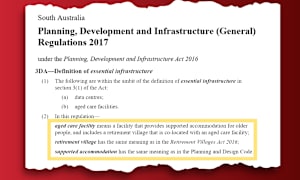In this week’s issue of SATURDAY, we will report that residential care occupancy is closer to 95% across Australia. Why is this a problem?
Because with just 1,500 new residential aged care places in the last 12 months to ‘sandbag’ against the rising tide of ageing Baby Boomers, the number just don’t stack up.
There are two million Australians expected to turn 80 over the next 10 years.
Even with people staying at home longer and utilising home care services, there will still be a significant cohort that will require higher-level care and support.
And the cash required to address this shortfall will be huge.
As we report in today’s SOURCE, Grant Thornton has forecast that $72 billion will be required over seven years to meet the increasing development costs for new aged care beds – primarily by the For Profit sector.
Where can the sector find the funds?
Historically, residential care has been less attractive to investors than other sectors because of its lower rate of return.
Instead, the system has predominately replied on Refundable Accommodation Deposits (RADs) as the primary source of capital for new beds.
But there has been continued uncertainty over the future of RADs driven by the Aged Care Royal Commission.
As part of its Terms of Reference, the Aged Care Taskforce has said it will provide advice on “reforms to arrangements for pricing and funding hotel and accommodation costs in residential aged care, including the phasing out of Refundable Accommodation Deposits.”
Combining RADs with a DMF-style payment?
But as the Grant Thornton report notes, RAD account for 71% of funding sources in the sector.
Its report puts forward several options for the reform of RADs – including keeping the system ‘as is’.
Given aggregated RAD balances in the sector have grown to $39.1 billion according to its figures – and form a key part of the sector’s funding – ‘throwing out the baby with the bath water’ appears unlikely.
However, Grant Thornton does note the option to retain the RAD system and add a DMF-style rental payment where operators would keep part of the RAD on the resident’s exit.
Given the current inequity between the RAD and Daily Accommodation Payment (DAP) system – which sees DAP residents pay more overall – this seems like a no-brainer.
Will this be on the cards for the Final Report?
Read more about Australia’s ‘true’ occupancy rate – and the consolidation taking place in the residential care sector in SATURDAY – subscribe here.
SATURDAY: With just four weeks until December when its Final Report is due, the pressure is on the Aged Care Taskforce to deliver real solutions to Government.










